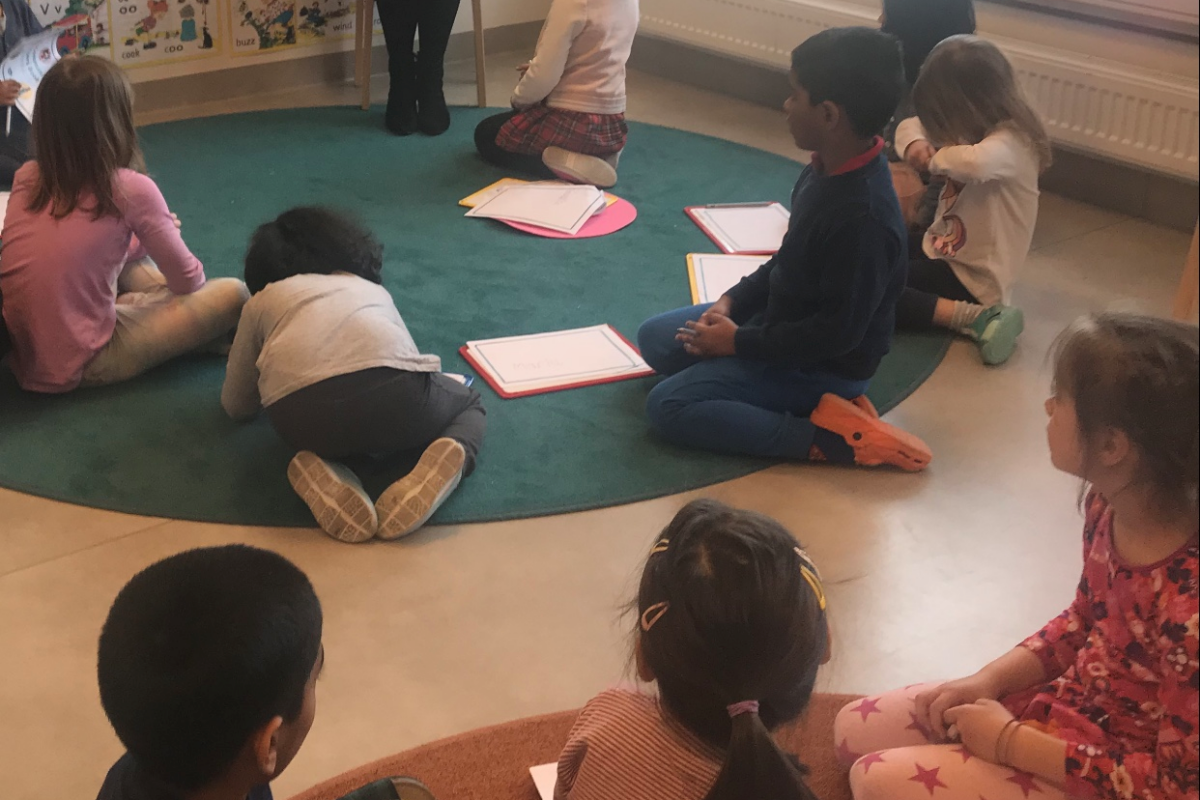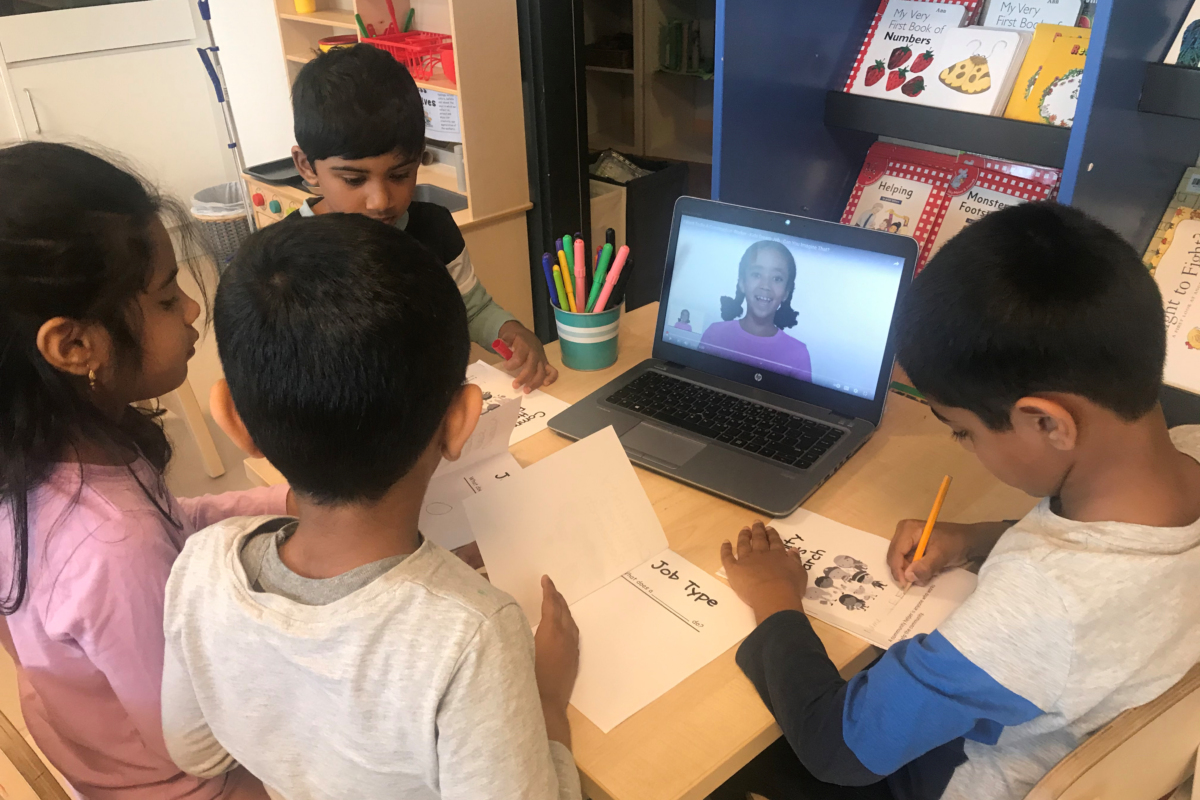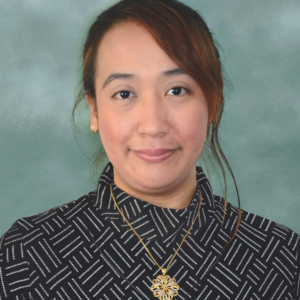This is a story of an Early Years section who believes that their young learners are capable of doing a mini exhibition. A journey that started with a vision and is now gradually unfolding with PYP: From principles into practice as a guide and an inspiration. Read An Early Years Exhibition: Translating a Vision into Action (Part 1)
Inspiring children to become creative thinkers, curious learners, and compassionate individuals is not just our responsibility as early childhood educators, it is our mission.
The early years exhibition story at the International School of Almhult continues as we are unfolding the unit of inquiry about the roles of the different community helpers and the importance of teamwork and communication in a community. To make the mini-exhibition relevant to our learners and their families, we carefully chose, planned and scaffolded the learning opportunities. This allowed our EYP 3 students to appreciate the process and gradually develop their understanding of the significant knowledge, skills, concepts, attributes and action.
The process started from the learning experiences gained in a simple tuning in activity of a Community Helper Dress Up Day where the children came dressed up like their favorite community helper or the community helper that they would like to be when they grow up. They completed the task below with a family member at home before the dress-up day.

According to Bransford et al. (2000), a learner-centred learning environment acknowledges and respects each learner’s cultural diversity to promote inclusiveness and the feeling of belonging to every learner. The emphasis on voice, choice, and ownership of learning represents the IB’s belief of a child as a capable learner. With this in mind, we highly involved our learners in the decision-making process. Inspired by the authoring cycle of Kathy Short, we looked into the prior knowledge and understanding of the children about community helpers.
Inviting parents to act as key mentors also supports the development of school-home partnerships throughout the unit. We learned from this process that children ages 5-6 have a good grasp and understanding of the world around them, especially when it comes to knowing how we organize ourselves as a community. They already understood the different roles or jobs that people do in the community, the tools they use to do their job, and why these roles are essential. Therefore, after informing ourselves of the children’s depth of understanding about this topic, we looked into deepening the concept of teamwork and collaboration primarily in the context of the early years. It is an essential set of social-emotional skills that children must develop to support their playing a positive role in a group.
A house system was also established at the beginning of the unit of inquiry. The use of playful and imaginative house names was also part of creating an atmosphere of fun and creative thinking. The house’s names were based on a famous children’s TV programme. All the students in all three EYP 3 classes were divided into four houses; this aimed to develop camaraderie and teamwork through differentiated hands-on learning and play among the children. Through play, an educator can fully understand the interest and passion, even the challenges and most profound emotions often not manifested in regular interaction with children (Gray, 2008). Our role as educators is to teach and enable every child to make meaning of life through play. Play is a powerful language for children of all cultures, backgrounds, interests, abilities, personalities and developmental phases. The house system serves as an opportunity to extend the skills of our learners in working with a team to achieve a goal.

The concept of a learning community was also introduced by providing an opportunity for the children to interview some school members. The learners were able to prepare some questions and brainstorm among themselves on how to conduct a proper interview. Using De Bono’s Six Thinking Hats was very helpful for children to analyze and categorize their thinking and ideas. As a result, the thinking process became more visible and apparent. They then conducted an interview with the Head of School
Some of the conversations and questions during the process of using the thinking hats included:
- Sathvik – “I would like to know why there are many different kinds of community helpers? (White thinking hat (Information) – What do I want to know?)
- Elena – “I already know why we need different community helpers, but I would like to know more about why they choose to be that kind of a community helper?” (Blue thinking hat (Thinking) – What is the next step?)
- Yuliana –“Can we help our community helpers if we invent better tools for them so they can do their job well? (Green thinking hat – Creativity and new ideas) – Can I create something new?)
- Dhrithi – “If all of us have the same jobs in the community, is that a good thing or not? (Yellow thinking hat (Strengths) – Why is this a good thing? and Black thinking hat (Judgement) – Can it be done?
- Vainidhi – “How would I feel if I can help others? (Red thinking hat (Emotions) – How do I feel about this?

These questions signify the ability of our EYP 3 students to use their higher-order thinking skills to find an answer to questions that matter to them. After the interview, all the classes were able to document these learning experiences in their community helper learning journals. The learning that arose from the collaborative and teamwork tasks and the interviews that we have conducted were strengthened through the research opportunities that the learners were able to do during their transdisciplinary learning. Research tools such as books (about the different community helpers), computers, and websites allowed the learners to dig deeper into the knowledge that they already knew. Constant reflection also becomes an integral part of the process. As assessment-capable practitioners in our setting, we value providing differentiated and developmentally appropriate assessments within the IB framework.

A simplified SOLO (structure of observed learning outcomes) taxonomy becomes a helpful tool to translate demonstration of skills and understanding in a language that children understand. The value of feedback and feedforward becomes motivation for improvement not just for the children but also for us. In an early years setting, any learning experiences become transformational if we allow our learners to drive the inquiry process. In SOLO taxonomy, the children were able to communicate where they were in their journey.
The process became more important than the outcome, and as a class, this approach helped us deepen our understanding that the value was more about how we contributed to enhancing each other’s abilities, passion, interest and belief in oneself rather than the knowledge we gained about the unit.
Below are some sample reflections using SOLO taxonomy with teacher guidance. The SOLO taxonomy guide includes symbols and colors that are child-friendly and age-appropriate. SOLO taxonomy was taught and developed all throughout the academic year.
- Mokshasri – “I can usually get on with my work, but sometimes I make mistakes. I would like to improve more by asking help from my teachers and classmates if I need it.” (Managing Self)
- Raghu – “I know how to improve next time.” (Thinking)
- Noa – “I can change what I am doing if it is needed.” (Participating and Contributing)
- Neel – “I can form a positive relationship with my classmates.” (Relating to Others)
More importantly, beyond the understanding of the importance of the community helpers and the significance of teamwork and collaboration is the more profound acknowledgment that all people of every race, language, ethnicity, and gender, are valuable members of the community and every one of us is able to serve one another.
Every unit of inquiry can be transformed into a much bigger opportunity, especially for our young learners, to experience learning that motivates them to be courageous in taking new challenges and inspiring them to become compassionate individuals. The value of a unit of inquiry is not just measured by how much thinking and skills we have learned and developed, but also through the development of values that will later influence and inspire our learners to become caring and responsible change agents no matter how young they are.

Ann Rava-Lynn is a knowledgeable and experienced IB Early Years practitioner. She has led some independent workshop and training about Play-based learning in Asia and has been invited to share her research and ideas about STEAM Education in Early Years in BETT Asia. She has worked as a Kindergarten Assistant Principal, Kindergarten Coordinator, PYP Coordinator and Grade Level Team Leader in different international schools in Asia, Africa, the Middle East and Europe. Ann considers herself a lifelong learner and loves sharing her expertise in Early Years innovation, STEAM Education and Reggio Emilia Approach to other educators who believe in the undeniable capacity and capability of children in making a difference in the world.
References:
Bransford, J. D., Brown, A. L., & Cocking, R. R. (Eds.). (2000). How people learn: Brain, mind, experience, and school. Washington, DC: National Academy Press. Retrieved from: https://www.nap.edu/download/9853
Gray, P. (2008, November 19). The value of play I: The Definition of play gives insights. Retrieved from https://www.psychologytoday.com/us/blog/freedom-learn/200811/the-value-play-i-the-definition-play-gives-insight

No comments yet.